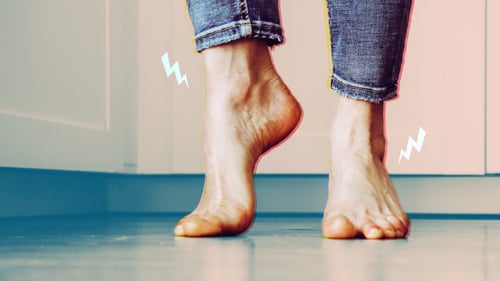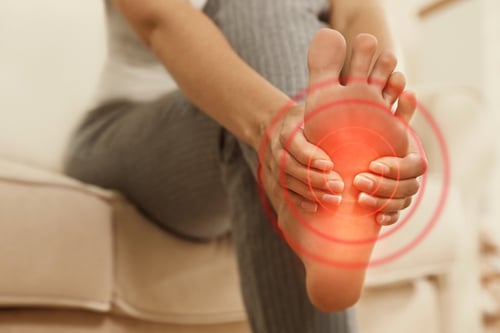Foot Pain and Diabetes: Everything You Need to Know

Anyone who suffers from diabetes is at a higher risk of developing foot pain due to nerve damage. This condition is called diabetic neuropathy, making regular foot checks by an experienced podiatrist essential.
Here, we’ll explain the condition, preventive measures, and some approaches to alleviate the pain.
How Diabetes Can Affect Foot Health
Diabetes-related foot pain is a complication that can develop due to both Type 1 and Type 2 diabetes. Those who have diabetes with extremely high glucose levels are more likely to suffer from diabetic neuropathy.
The blood vessels and nerves that supply the feet are especially tender, so any damage can result in pain to both the foot and the toes.
Peripheral artery disease develops when damage to the vessels causes them to become narrow and stiff. This lowers blood flow to the feet, which can result in:
- Skin breakdown that makes it more prone to infection and damage.
- Increased healing time.
- Developing ulcers, infections, and gangrene.
- Tingling sensations in the foot.
What Are the Symptoms of Foot Diabetic Neuropathy?
There are a few key indicators that are signs of diabetic neuropathy in the feet. Tingling or pin and needle sensations are the first sign, and it may feel similar to when your feet fall asleep. Another trigger warning is when the feet experience higher levels of sensitivity.
Numbness or weakness is also a common sign that diabetes is affecting your foot health. Nerves allow us to feel, and they also tell our muscles when to work. If you don’t feel when you step or move, it’s likely you have nerve damage. Should the foot become damaged and the blood circulation is poor, wounds can take longer to heal.
Keeping Symptoms at Bay
Managing blood sugar levels with medication and a healthy diet is the best prevention and healing method for those with diabetic foot pain. Ceasing smoking and maintaining a healthy body weight can help minimize symptoms and lower the risks of diabetic foot pain.
Of course, routine checks with our podiatrists can assist with avoiding further complications like foot injuries and ulcers.
What To Do If You Have Diabetic Foot Pain Symptoms
If you are experiencing painful sensations or a lack thereof of feeling in your feet, make an appointment with one of our specialists in The Woodlands or Magnolia in Montgomery Country. D. Sean Sweeney, D.P.M., and Christy Leahey, D.P.M., are foot and ankle physicians with years of experience in treating diabetic neuropathy. Contact Sweeney Foot and Ankle online to schedule an appointment.






